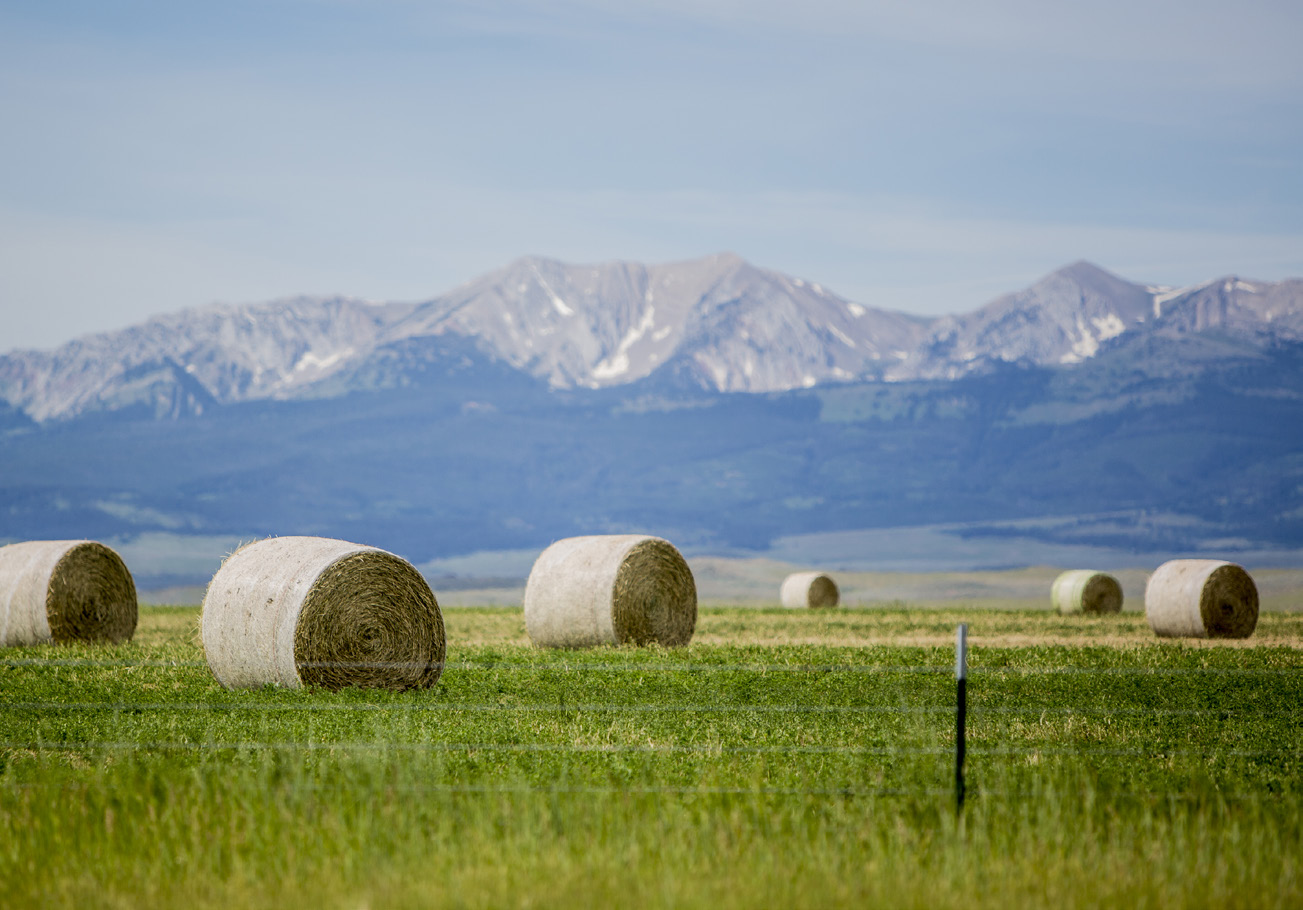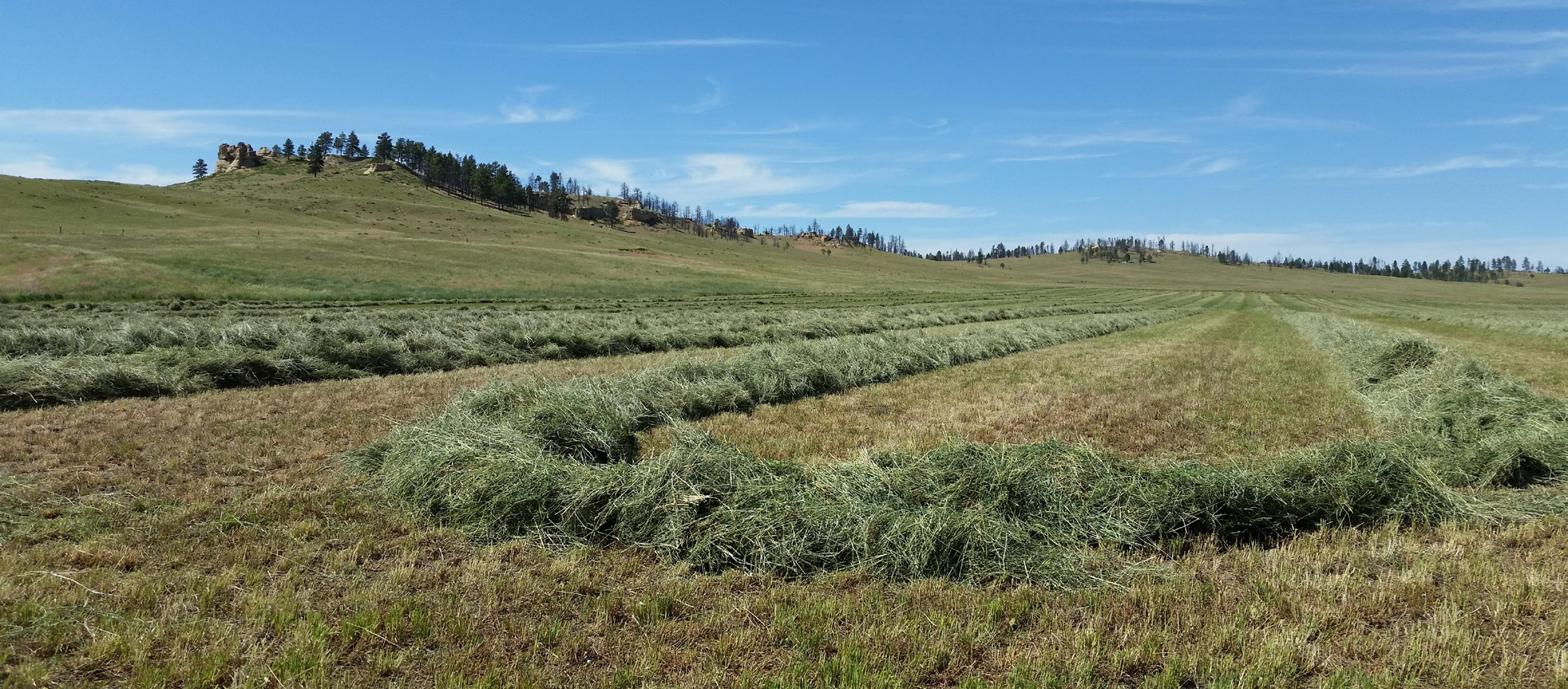How a Dynamic Hay Market Affects Livestock Hay Prices
A Comprehensive Guide for Buyers and Sellers of Hay
In agriculture, hay and forage crops play a crucial role as a staple feed for livestock.
The 2021 Montana cash receipts from agricultural animals and products were $1.83 billion,
according to the USDA Economic Research Service. From dairy cows to horses, and for
many species of livestock, hay
provides essential nutrients to keep farm animals healthy and producing.
The hay market can be highly dynamic from year to year, and understanding the factors influencing hay prices is crucial for both buyers and sellers. In this article, we will explore the critical influences of livestock hay prices and offer valuable considerations for those involved in the hay trade.
FACTORS INFLUENCING HAY PRICES
- Weather Conditions: Mother Nature has a significant impact on the hay market. Droughts, floods, and extreme weather events can disrupt hay production, reducing supply and increasing prices. Conversely, favorable weather conditions can produce abundant hay yields, leading to more competitive pricing. The impacts of weather affect both local and regional supplies; one area may experience weather leading to a shortage of hay while another region nearby may have optimum conditions for larger harvests and availability.
- Growing Season and Crop Yield: The amount of hay harvested during a growing season directly influences price. A productive growing season with ample yields usually leads to lower hay prices. At the same time, a year with poor harvests can drive prices upward. Some locations can produce up to three cuttings in a growing season, while other locations produce one.
- Input Costs for Production: The annual costs of diesel fuel, fertilizer, labor, and other production inputs can affect the final price of hay crops. Additionally, the type of bale can influence the cost per ton. Small, square bales are less efficient and more labor intensive to put up than large squares or round bales, but often have a premium price point per ton when compared to larger bale options.
- Transportation Costs: The distance between hay producers and consumers affects transportation expenses. Higher transportation costs can raise the final price of hay, especially if it needs to be shipped long distances.
- Demand for Hay: The demand for hay is closely tied to the commodities produced by the livestock industry. If there is a surge in demand for livestock products, such as milk or meat, the demand for hay will also increase, potentially driving up prices.
- Alternative Feed Options: The availability of alternative feed sources, like silage or grain, can impact hay prices. When alternative feeds are scarce or expensive, the demand for hay may rise, driving prices higher.
- Storage and Handling Costs: Properly storing and handling hay is essential to maintain quality. These additional costs can influence the overall pricing of hay in the market. Potential delivery charges are also a price consideration.
USDA HAY QUALITY DESIGNATION GUIDELINES
The United States Department of Agriculture (USDA) has established Hay Quality Designation Guidelines to facilitate fair trading and ensure transparency in the hay market. These guidelines help buyers and sellers understand the quality of hay being traded. Hay quality is classified into four categories:
- Supreme: Hay in this category is of the highest quality, boasting excellent green color, fine stems, and is virtually free from mold, dust, or weeds. It has high nutritional value and is the most sought-after type.
- Premium: This hay grade is slightly lower in quality than Supreme but is still very nutritious. It may be more mature, have a few more weeds, or have marginally coarser stems.
- Good: Good quality hay is nutritious but may be more mature, have some discoloration, and include moderate amounts of lower-quality weeds.
- Fair/Poor: Hay in this category is of lower quality and may contain significant levels of weeds, mold, or dust. Its nutritional value is reduced, making it less desirable for livestock consumption.
Buyers should know these USDA designations to make informed decisions when purchasing hay. While Supreme and Premium hay may have a higher price tag, they offer superior nutritional benefits, potentially reducing overall feeding costs in the long run.

Photo: Adrian Sanchez-Gonzalez, MSU Photo
CONSIDERATIONS FOR BUYERS
- Quality vs. Price: When selecting hay, buyers must find the right balance between quality and price. While premium hay may be more expensive, it can provide better nutrition for livestock, potentially reducing health issues and improving productivity. There may be additional nutrient supplementation costs associated with lower-quality hay.
- Inspecting Hay Bales: Buyers should physically inspect hay bales whenever possible. Look for signs of mold, dust, weeds, and overall color and texture to determine the quality. A sample sent to a laboratory for analysis can also help assess the nutritional content and overall quality of forage as a potential feedstuff.
- Building Relationships with Sellers: Developing relationships with reliable hay producers can be beneficial in securing consistent and quality hay supplies.
- Storage and Handling: Adequate storage and handling practices should be implemented to maintain hay quality after purchase.

Photo: Molly Hammond, MSU Extension
CONSIDERATIONS FOR SELLERS
- Accurate Quality Assessment: Sellers must accurately assess the quality of their hay and price it accordingly. Misrepresenting hay quality can lead to disputes and damage the seller’s reputation.
- Marketing Strategies: Implement effective marketing strategies to reach potential buyers, including advertising, participating in agricultural events, or joining online hay marketplaces.
- Customer Satisfaction: Prioritize customer satisfaction by providing accurate information about hay quality, offering fair pricing, and ensuring timely deliveries.
The livestock hay market is influenced by many factors, including weather conditions, growing season, transportation costs, demand, and alternative feed options. Buyers and sellers of hay should consider these factors carefully to make informed decisions. Additionally, the USDA Hay Quality Designation Guidelines are crucial in maintaining transparency and facilitating fair trade in the hay market. By understanding these considerations, buyers and sellers can navigate the hay market successfully and contribute to the production goals of many livestock industries. For more information on forage quality or nutritional analysis, contact any local MSU Extension office.
Hayes Goosey is an MSU Extension Forage Specialist and Assistant Professor.
